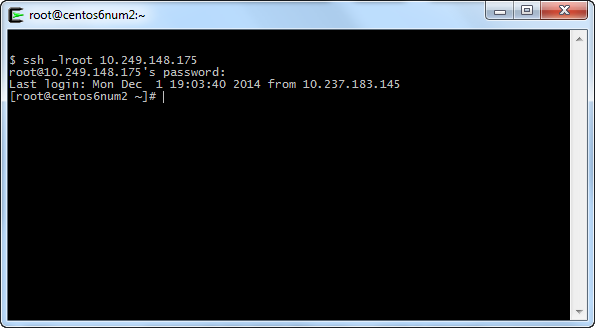Basic template
Introductory text that gives an overview of the topic you will be writing about.
The purpose of this page is to provide you with a pre-formatted template and useful markdown references to help you get started writing docs.
You can start off by editing the local version of this file using markdown language (and HTML where needed). Then, create a Pull Request to have your contribution reviewed by the DevDocs team.
Metadata parameters
Add the following metadata parameters at the top of your page. We use YAML for the metadata in front matter. We use this data when generating the DevDocs for the following:
| Parameter | Description |
|---|---|
group: |
The table of contents this file belongs to, which points to files located in _data/toc/. Only add the name of the file without the extension. For example, the group of this file is group: contributor-guide, which points to the table of contents defined in _data/toc/contributor-guide.yml. |
title: |
The title of the page. |
functional_areas: |
Optional. Adds facets for search results. Available facets include: Sales, Products, Carts, Customers, Marketing, Account, Content, Reports, Stores, System, Catalog, Orders, Frontend, Theme, Staging, Search, Configurations, Integration, Services, Tools, Setup, Testing, test, Standards, Install, Upgrade, B2B, Cloud, and Bundled extensions. These facets are case sensitive and support multiple facets separated by commas. For example: functional_areas: Install. |
redirect_from |
Optional. Add a list of other pages in DevDocs that should redirect to this page. The link should start with the /guides directory. For an example, see the source code for this template page. |
ee_only: |
Optional. If set to true, graphics/cues display on the page indicating it applies to Magento Commerce. |
If you need help with metadata, we can help in your submitted pull requests.
Basic Markdown Syntax
Below are some basic examples of what you can do with markdown.
Text Effects
| Example | Output |
|---|---|
*emphasis* |
emphasis |
**bold** |
bold |
`inline code` |
inline code |
By indenting your content by at least 4 spaces, you can create a code block. For extensive examples of adding code samples, see Code blocks.
1
2
//This is a code block!
print "Hello World!";
For more examples of basic markdown please follow this link.
Lists
Lists are useful for organizing and displaying related items. Below are examples of a bulleted list and an ordered list.
Bulleted List:
1
2
3
* List Item 1
* List Item 2
* List Item 3
Output:
- List Item 1
- List Item 2
- List Item 3
Ordered List:
1
2
3
1. First Step
2. Second Step
3. Third Step
Output:
- First Step
- Second Step
- Third Step
Images
Please add any images you may need to the common/images directory.
Once the image is added, you can use it in your documentation:
Example: 
Output:

You can even scale the image if it is too large:
Example: {:width="446" height="246"}
Output:

Tables
Tables can be useful for displaying different kinds of data in an organized way.
Example:
1
2
3
4
5
6
<!-- Basic Markdown Table Syntax -->
| Column Heading | Column Heading | Column Heading |
|----------------|----------------|----------------|
| Data 1 | Data 2 | Data 3 |
| Data 4 | Data 5 | |
| Data 6 | | |
Output:
| Column Heading | Column Heading | Column Heading |
|---|---|---|
| Data 1 | Data 2 | Data 3 |
| Data 4 | Data 5 | |
| Data 6 |
You can read more about table syntax here.
Advanced Syntax
Code blocks
Code blocks can also be defined using Rouge formatting. View the .md file of this template for examples.
For inline code, surround the content with single backticks: `example`.
For blocks of code, surround content with 3 backticks and an optional supported language.
Example:
1
2
3
4
5
6
7
```html
<div class="container">
<h4 class="title">Title</h4>
<div class="content">
<p>Paragraph content.</p>
</div>
</div>
1
2
3
4
5
6
7
8
9
10
*Output:*
```html
<div class="container">
<h4 class="title">Title</h4>
<div class="content">
<p>Paragraph content.</p>
</div>
</div>
Callout Messages
Use these messages to highlight or bring attention to a piece of information.
Notes:
1
2
3
4
5
6
7
{%
include note.html
type='info'
content='This is a note callout. You can use these to provide important information on a topic.'
%}
Output:
This is a note callout. You can use these to provide important information on a topic.
Warnings:
1
2
3
4
5
6
7
{%
include note.html
type='warning'
content='This is a warning callout. This can be used to convey important information to the reader.'
%}
Output:
This is a warning callout. This can be used to convey important information to the reader.
Tips:
1
2
3
4
5
6
7
{%
include note.html
type='tip'
content='This is a tip callout. These can be used to provide useful tips or interesting facts on a topic.'
%}
Output:
This is a tip callout. These can be used to provide useful tips or interesting facts on a topic.
Collapsible content
You can use the collapsible content tag for large code samples in your content. Any content in a collapse is blocked from searching on page.
The {% collapsible %} tag must be preceded by a blank line.
Example:
1
2
3
4
5
{% collapsible This is the title %}
Markdown content goes in this area.
{% endcollapsible %}
Output:
Markdown content goes in this area.